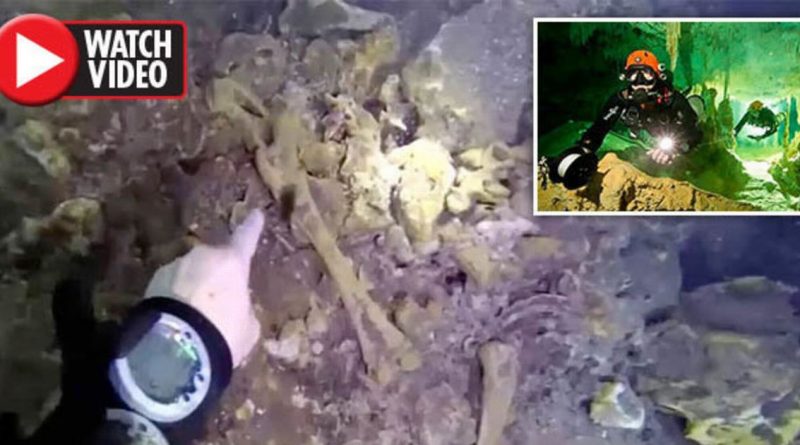Huge 12,000-year-old underwater cave found with human skulls PERFECTLY intact
Don’t miss a thing by getting the Daily Star’s biggest headlines straight to your inbox!
In remarkable footage, researchers from the Gran Acuifero Maya (GAM) Project are seen hiking up a hill in Mexico.
They then crawl through a crevice to discover a huge cenote (underwater cave).
When the cavern was rediscovered some 14 years ago, it was thought to match the tunnel network of Ox Bel Ha, which measured 167.9 miles.
But the GAM team have now found that the cave connects two underwater systems – Sac Actun and Dos Ojos – making it the longest in the world at 216 miles.
And inside, researchers have found remnants of thousands of years of Mayan culture, preserved due to the fresh water.
Project Director Guillermo de Anda said: “Without a doubt, it is the most important submerged archaeological site in the world and home to hundreds of preserved secrets.
“We’ve recorded more than 100 archaeological elements: the remains of extinct fauna, early humans, Mayan archaeology, ceramics and Mayan graves.
“It’s also very significant that this discovery enables us to see the possible patterns of past settlement.”
Guillermo added that the cave's origins can likely be traced back to somewhere between the Pleistocene period and the era of the ancient Mayans, meaning it could be over 12,000 years old.
Among other discoveries, the team found intact human skulls, bones form elephants, bears, tigers and also now-extinct plants.
Cenotes were regarded as the third level of the universe by Mayans, after the heavens and Earth.
Caves such as the one found in Quintana Roo “transports you to a place 10,000 to 12,000 years ago”, Guillermo added.
German explorer Robert Schmittner spent more than 14 years of research, exploration and analysis to find the tunnel.
The structure of the cave proved particularly challenging – shrinking from 120 metres in width to just one.
Source: Read Full Article




